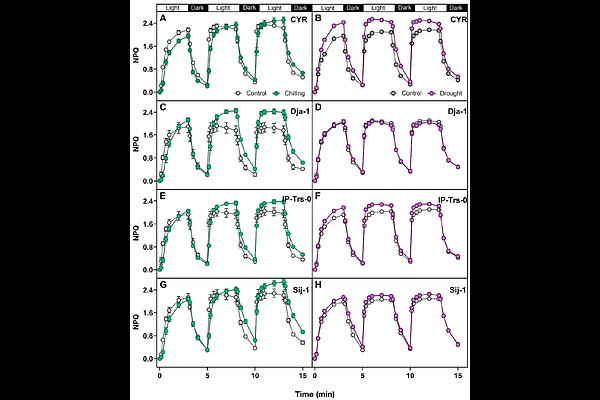Nonphotochemical quenching changes with abiotic stressor and developmental stages

Nonphotochemical quenching changes with abiotic stressor and developmental stages
Sahay, S.; de Bernardeaux, G.; Gamba, D.; Lasky, J. R.; Glowacka, K.
AbstractNonphotochemical quenching (NPQ) is a critical photoprotective mechanism in plants, safeguarding photosystem II (PSII) and PSI from photodamage under abiotic stress. However, it is unclear if different stressors lead to similar NPQ phenotypes, and the magnitude of natural variation (between and within plant species) in NPQ response to abiotic stress is unknown. Testing a semi-high-throughput leaf-disc approach for examining the NPQ kinetics parameters, we investigated NPQ under chilling, drought and low nitrogen stress across multiple species and/or genotypes. Our results show substantial variation in NPQ phenotypes across species, genotypes and treatments. In C3 crops, tobacco and soybean, multiple NPQ parameters generally increased under chilling and drought, while in C4 crops, maize and sorghum, NPQ traits were more variable including a decrease of multiple NPQ parameters. Low-N stress revealed genotype- and developmental stage-specific effects on NPQ, potentially reflecting distinct adaptive strategies and regulatory changes in NPQ stress response. A significant effect of ecotype and stress treatment was detected on most NPQ kinetics traits in Arabidopsis thaliana, however, the interaction between ecotype and treatment was stronger in drought than in chilling. Differential regulation of NPQ could be associated with a combination of changes in proton motive, ATPase synthase activity, and PSI redox state. Our findings highlight that interpreting relative changes in NPQ under abiotic stress is inherently complex and demands a broader integration of physiological data across multiple regulatory layers.